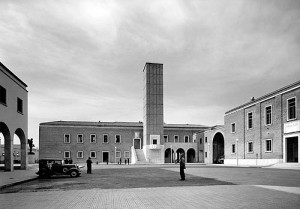The first of Wednesday’s readings, the Nazi-Soviet Non-Aggression Pact, was a document that created a mutually beneficial, albeit brief, truce between Hitler’s Germany and Stalin’s Russia. Although both countries had fundamentally different political systems and ambitions, Russia favored entering into a non-aggression pact because it knew that Germany was a highly industrialized, blossoming state that posed them a significant threat. Stalin knew that if Hitler chose to strike Russia, they would not be adequately prepared to defend themselves. At first the truce benefitted Germany because once they decided to engage most of Europe, they knew that they would not be required to fight a two-front war as they had to do in the past during WWI. Hitler saw fit to violate this pact, which it appears to have been his intention all along, because it was part of his political ideology to remove the Jewish problem in the east in order to make room for the Lebensraum to house the burgeoning German population. He believed that Russia could be easily taken, allowing Germans to reclaim the territory that is rightfully theirs, from the Bolshevik/Jewish “menace.”
The second of Wednesday’s readings, Stalin’s speech form 1946, was the speech that highlighted his re-election campaign. In this speech he attributed Russia’s victory to the effectiveness of the country’s Soviet system. Stalin adamantly professed the efficacy of the system when he stated, “The issue now is no longer the viability of the Soviet state system, because there can be no doubt about its viability…” While it is true that Russia was much more effective fending off Germany in WWII than WWI, Stalin asserted that no other system could have achieved such positive results. While arguing for the efficacy of his Five Year plans, he compared Russia’s output in 1941 to that of 1913. He used suspect reasoning while justifying his argument with these statistics because Russia was in such a dismal state of affairs in 1913 that the gains experienced during this interval of time could in fact be considered, “the simple and ordinary development of a country from backwardness to progress.” Once Germany violated their Non-Aggression pact, Russia was put on the defensive and nearly taken over by Germany. For a nation as large and populous as Russia, the industrialization achieved by 1941 was still relatively lackluster. When Stalin stated in his speech that “it does not resemble the picture of the way our army was supplied during the First World War, when the front suffered chronic shortages of artillery and shells, when the army fought without tanks and aircraft, and when one rifle was issue for every three men,” he is partially incorrect because that was the Red Army’s state of affairs for much of the first half of the war. During the battle of Stalingrad troops were sent into battle rifleless, similarly to WWI. Also, Stalin was forced to pass order #227, which stated that any man who made an attempt to retreat was to be gunned down by his own troops who were stationed in the rear of the lines.[1] He failed to take into consideration the fact that any population facing the brink of total annihilation will do anything in their power to survive by focusing the entire nation’s efforts and resources towards the war effort, regardless of what system is in place. Stalin used the Russian victory as a springboard to launch his reelection campaign. He only highlighted the positive aspects of the war, which obviously cumulated with a Soviet victory against their antagonistic, Nazi-German enemy. What he chose to exclude from his speech was the 21 to 28 million deaths that the Soviet Union experienced during the war – far more than any other participating nation.
[1] http://en.wikipedia.org/wiki/Order_No._227

